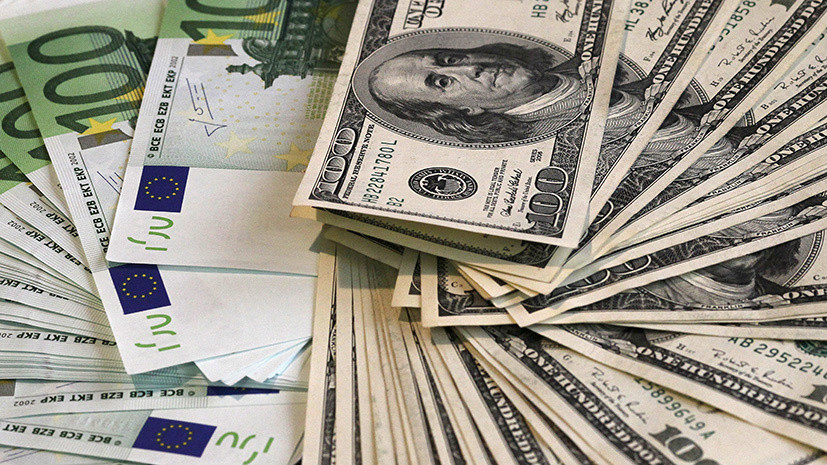At the beginning of 2020, one of the determining factors for the Russian currency may be the development of trade relations between the United States and China. In December 2019, Washington and Beijing refused to introduce new mutual restrictions, and Donald Trump announced the possible coordination of the first stage of the trade deal “within a couple of weeks”.
Usually, during a decrease in geopolitical tensions in the world, investors begin to actively buy risky assets. Therefore, improved trade relations between the United States and China could have a positive effect on the ruble. About this in an interview with RT said portfolio manager QBF Denis Ikonnikov.
“If the trade conflict ends, the demand for risky assets may increase. This will affect not only the Russian, but also all emerging markets similar to ours. As a result of an increase in this demand for risky assets, the ruble can also strengthen, ”said Denis Ikonnikov.
Moreover, in 2020, the Central Bank’s policy can have a serious impact on the Russian currency, said Andrei Lyushin, deputy chairman of the board of CB LOKO-Bank.
“The Russian currency was one of the most profitable in 2019, and the Central Bank deliberately lowered the key rate, taking the global trend to ease monetary policy. It is likely that the Central Bank will continue such work in 2020. The regulator can reduce the rate from today's 6.25% to 5.5-6% per annum, ”Lyushin said in a conversation with RT.
Over time, a decrease in the Central Bank rate will lead to a decrease in the yield of Russian bonds, so investors are trying to pre-purchase government securities at a bargain price. As a result, the actions of the Central Bank can increase the inflow of foreign investment into the Russian debt market and thereby support the ruble.
In addition to lowering the Central Bank's rate, positive factors for the ruble could be low inflation, a large amount of foreign exchange reserves and a budget surplus in Russia. So, foreign investors positively assess the stability of the country's economic indicators and begin to invest more confidently in Russian assets. This was told to RT by the chief strategist of Univer Capital Dmitry Alexandrov.
According to the analyst, in part, the dynamics of the ruble will also depend on changes in world oil prices. In 2019, the barrel of the Brent benchmark rose more than 20%, to $ 66-67. According to Aleksandrov, in 2020, quotes may begin to decline and put a little pressure on the Russian currency.
At the same time, the influence of oil prices will be limited by the budget rule, which stipulates that during the rise in price of hydrocarbons, the Ministry of Finance buys foreign currency and thereby puts pressure on the ruble. Moreover, in the event of a collapse in the energy market, the ministry ceases operations - and pressure on the ruble weakens. As a result of such actions, the dependence of the national currency on oil prices is reduced.
Recently, the effect of the fiscal rule has weakened the relationship between the ruble and oil, so currency market players have become less likely to react to changes in commodity prices, said Mark Goikhman, head of the CFT analyst group.
“If we compare the dynamics of oil prices and stock markets, then in 2019 the ruble really responded well to the growth of exchanges. At the same time, the national currency was almost completely able to untie it from fluctuations in oil prices, ”Mark Goichmann explained to RT.
According to the analyst, the ruble may continue to go up until mid-summer.
At the same time, experts interviewed by RT do not expect excessive strengthening of the national currency throughout 2020. So, to support Russian exporters, the Ministry of Finance and the Central Bank can begin to actively buy up foreign currency and thereby increase pressure on the ruble.
“Strengthening the national currency is not always beneficial to the state. Since the Russian budget is calculated in rubles, and oil prices in dollars - the strengthening of the ruble reduces treasury income. For example, when the dollar exchange rate decreases by 1 ruble, it costs the budget an average of 150-160 billion rubles a year. Therefore, financial authorities are forced to balance between a favorable exchange rate, export earnings, budget revenues and GDP growth, ”said Dmitry Alexandrov.
Without hesitation
According to Denis Ikonnikov, at the beginning of 2020 the dollar will be trading below 62 rubles. In the future, the indicator may begin to grow moderately.
“In general, in 2020, the dollar will remain in the region of 61-65 rubles. At the euro exchange rate, the situation will be similar. At the beginning of the year, we will see a value below 69 rubles, and throughout the course of 2020, the rate will be near 68–71 rubles, ”the analyst believes.
At the same time, Finam Group analyst Alexei Korenev admits three options for the development of events on the Russian foreign exchange market in 2020. The expert considers the most likely neutral scenario. It is about maintaining stable oil prices and the absence of new sanctions. According to Korenev, in this case, the dollar will be in the range of 65–66 rubles. At the same time, the analyst notes a small probability of a negative scenario.
“If additional sanctions are imposed against Russia, and oil prices fall below $ 50 per barrel, the dollar may rise to 70 rubles or more, but this is unlikely,” Korenev said.
Aleksey Korenev did not rule out that, given the current conditions on foreign markets and the development of the Russian economy, the dollar exchange rate may fall below 60 rubles better than forecasts. In this case, the currency corridor may be 56-59 rubles.

